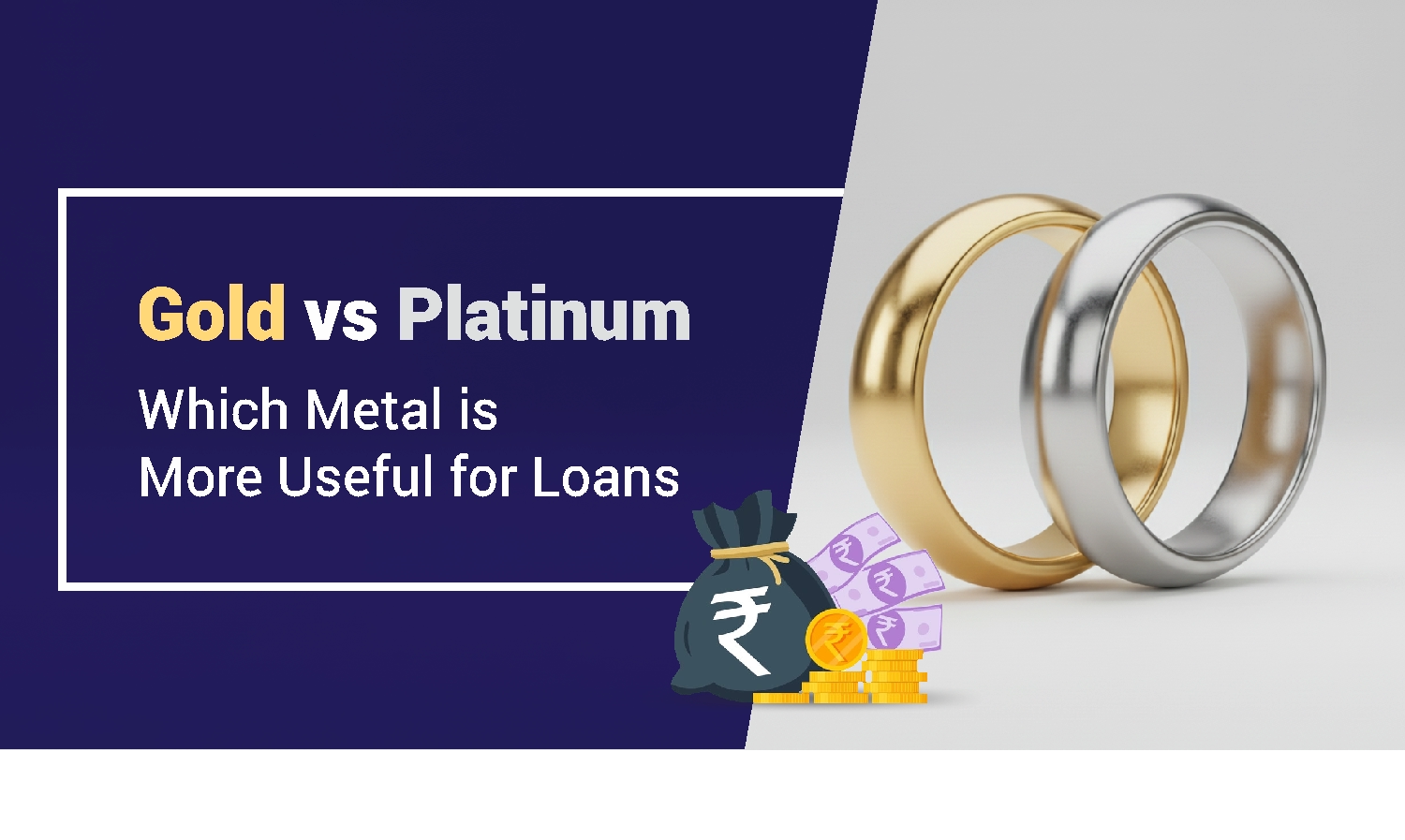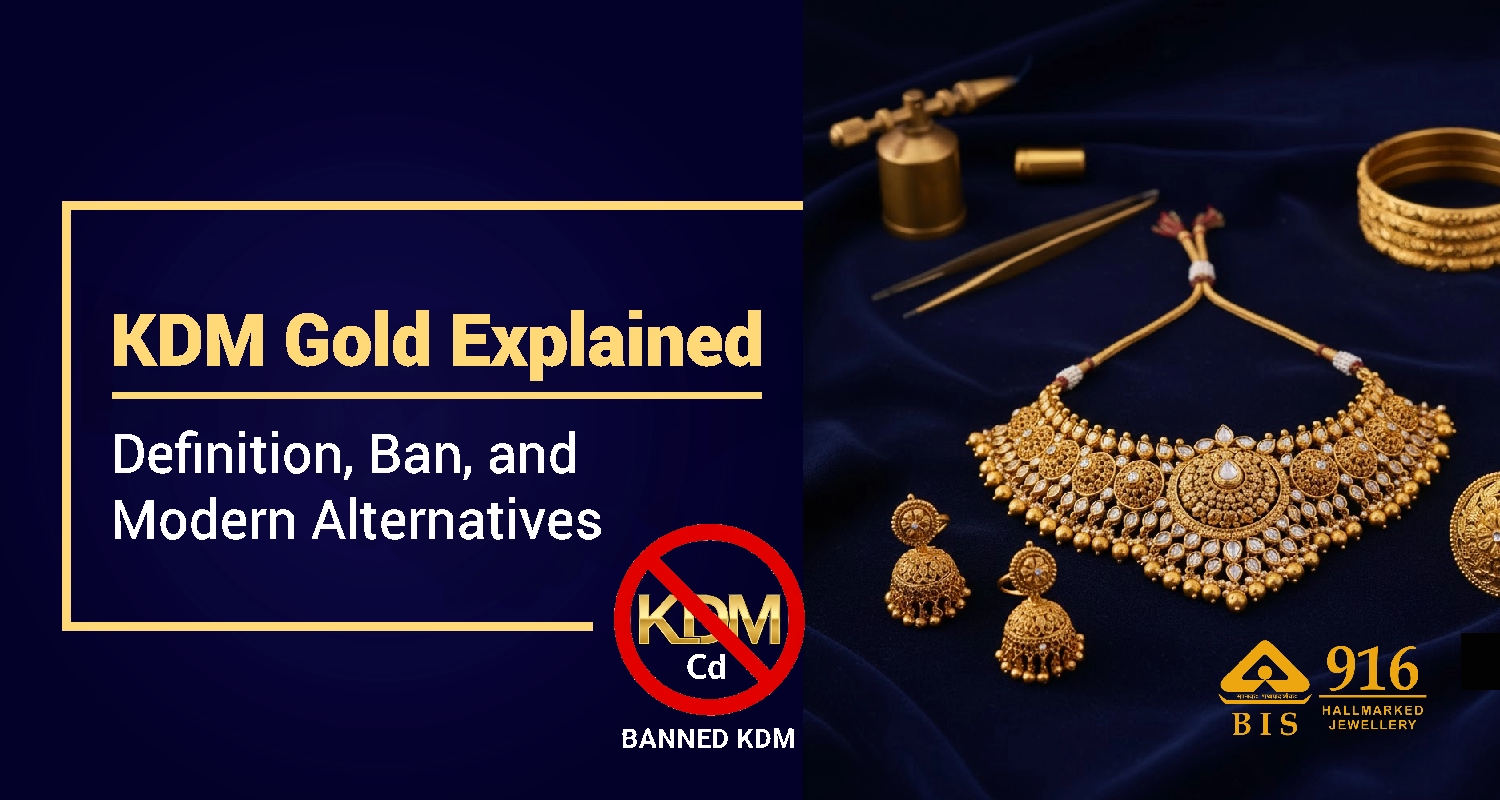- Home
- Gold Rate
- Gold Rate In India
Ever peeked at the news and wondered why gold rates seem to have a mind of their own? Well, it’s like your favourite weather forecast, but instead of rain or sunshine, we're predicting the value of gold today in India. It's a bit like magic—the price goes up, and down, and sometimes even stays stagnant for a while. So, let's unravel the mystery behind these daily gold rate updates and figure out what makes them dance on the financial stage.
Gold Price in India for 22K and 24K Gold Purities
Today 22 Carat Gold Rate
If you are wondering about how much gold rate today, you have come to the right place. Explore the dynamic gold markets in India updates on the gold prices of 22 carat gold:
| Gram | Today | Yesterday | Price Change |
|---|---|---|---|
| Gold rate for 1 gram | ₹ 12,560 | ₹ 12,437 | ₹ 124 |
| Gold rate for 10 gram | ₹ 125,604 | ₹ 124,368 | ₹ 1,236 |
| Gold rate for 12 gram | ₹ 150,725 | ₹ 149,242 | ₹ 1,483 |
Today 24 Carat Gold Rate
If you plan to invest in gold in the future, you may want to go through 24 carat gold rate updates. Consider taking look at the following information given below:
| Gram | Today | Yesterday | Price change |
|---|---|---|---|
| Gold rate for 1 gram | ₹ 13,712 | ₹ 13,577 | ₹ 135 |
| Gold rate for 10 gram | ₹ 137,122 | ₹ 135,773 | ₹ 1,349 |
| Gold rate for 12 gram | ₹ 164,546 | ₹ 162,928 | ₹ 1,619 |
Gold Rate in India
Delve into the visual journey of India's gold market through our informative graph, illustrating the captivating fluctuations and trends in gold rates. It offers a snapshot of the economic nuances that shape the nation's precious metal landscape.
Disclaimer: IIFL Finance Limited (including its associates & affiliates) ("IIFL") makes no guarantee or warranty on the accuracy of the data provided on this site, the prevailing rates are subject to change and are provided on an as-is basis with no guarantees of completeness, accuracy, usefulness or timeliness and is without any warranties of any kind, express or implied. Nothing contained herein is intended or shall be deemed to be investment advice, implied or otherwise. IIFL accepts no liability or responsibility for any errors or omissions in the content stated herein and under no circumstances shall IIFL be liable for any damage, loss, injury or disappointment suffered by any reader.
Historical Gold Rate in India For The Last 10 Days
Take a trip down memory lane with our Historical Gold Rate in India for the last 10 days. Unveil the patterns and shifts in gold prices, offering a concise yet insightful glance at the recent journey of this precious metal through the Indian market. Learn more about Gold Price History & Historical Trends in India.
| Day | 22K Pure Gold | 24K Pure Gold |
|---|---|---|
| 09 Jan, 2026 | ₹ 12,560 | ₹ 13,712 |
| 08 Jan, 2026 | ₹ 12,436 | ₹ 13,577 |
| 06 Jan, 2026 | ₹ 12,518 | ₹ 13,666 |
| 05 Jan, 2026 | ₹ 12,473 | ₹ 13,616 |
| 02 Jan, 2026 | ₹ 12,346 | ₹ 13,478 |
| 01 Jan, 2026 | ₹ 12,225 | ₹ 13,346 |
| 31 Dec, 2025 | ₹ 12,200 | ₹ 13,319 |
| 30 Dec, 2025 | ₹ 12,329 | ₹ 13,459 |
| 29 Dec, 2025 | ₹ 12,529 | ₹ 13,678 |
| 26 Dec, 2025 | ₹ 12,636 | ₹ 13,795 |
Gold Price Calculator in India
Gold should be minimum 0.1 grams
Gold value: ₹ 12,560.40
Gold as an Investment in India
In the diverse landscape of Indian investments, gold stands as a timeless and glittering beacon. More than just a metal, it's a coveted asset that has transcended generations, serving as a reliable store of value and a symbol of prosperity. Here's a closer look at why gold continues to be a favoured choice for investors in India:
Historical Significance: Passed through generations, gold is a timeless store of wealth.
Hedge Against Inflation: Gold's value often rises when currencies falter, making it a reliable inflation hedge.
Cultural Affinity: Integral to weddings and festivals, gold's cultural importance boosts its investment allure.
Portfolio Diversification: Gold's low correlation with stocks and bonds adds stability to diversified portfolios.
Liquidity and Accessibility: Highly liquid markets allow easy buying and selling of gold in various forms.
Safe Haven in Uncertainty: During economic turmoil, gold's stability makes it a sought-after safe haven.
Diverse Investment Avenues: Beyond jewellery, options like coins, bars, digital gold, and ETFs cater to varied investor preferences.
Long-Term Appreciation: While subject to short-term fluctuations, gold has historically appreciated over the long term.
Factors that Impact Gold Prices in India
The gold market in India is a dynamic arena influenced by various factors. Here's a breakdown of the key elements that impact gold prices in the country:
- International Gold Prices: The global gold market has a significant influence on prices in India. Fluctuations in international rates, driven by geopolitical events, economic indicators, and demand-supply dynamics, directly impact local prices.
- Currency Exchange Rates: Since gold is traded in U.S. dollars globally, fluctuations in the Indian rupee's exchange rate with the dollar play a crucial role in determining the cost of gold in the local market.
- Central Bank Reserves: Actions taken by central banks, including gold purchases or sales, can have ripple effects on the gold market. Changes in central bank reserves often signal shifts in global economic conditions, impacting gold prices.
- Inflation and Interest Rates: Gold is often viewed as a hedge against inflation. When inflation rises or interest rates drop, the appeal of gold as a store of value increases, leading to higher demand and prices.
- Geopolitical Events: Political instability, conflicts, and global uncertainties can drive investors towards safe-haven assets like gold. Any significant geopolitical event can result in a sudden surge in demand, influencing prices.
- Local Demand and Festive Seasons:Domestic factors, such as increased demand during festivals and wedding seasons, play a pivotal role in shaping gold prices in India. High demand can lead to price spikes.
- Mining and Production Costs: The costs associated with gold mining and production contribute to the overall pricing structure. Changes in mining regulations, exploration activities, and production costs can impact prices.
- Government Policies and Taxes:Government policies, especially those related to import duties and taxes on gold, can affect its overall cost. Changes in these policies may lead to price adjustments.
- Monetary Policy:Decisions related to monetary policy, including interest rate changes by the Reserve Bank of India (RBI), can influence the investment landscape. Gold prices may react to shifts in monetary policies.
- Global Economic Conditions:The overall health of the global economy, including indicators like GDP growth, employment rates, and consumer confidence, can impact investor sentiment and, consequently, gold prices.
India's Inclination Towards Gold
India's love affair with gold is more than a financial inclination; it's deeply woven into the cultural fabric of the nation. Gold is not merely a precious metal; it holds profound emotional and traditional significance. From weddings that sparkle with golden adornments to festivals where gold plays a starring role, its gleam is an inseparable part of life's celebrations. Beyond aesthetics, gold represents wealth, prosperity, and a timeless connection to heritage. Passed down through generations, it embodies familial legacies and is a symbol of status. This profound cultural attachment ensures a sustained demand for gold in various forms, making it an integral aspect of India's social and economic landscape.
Gold Demand in India
Gold demand in India is a dynamic force that transcends the realms of tradition, fashion, and investment. Beyond its intrinsic value, gold plays a pivotal role in cultural ceremonies, festivals, and significant life events. The allure of gold jewellery during weddings, the exchange of gold coins during festivals, and the gifting of gold as a symbol of prosperity are embedded in the cultural psyche. However, the demand for gold has evolved beyond traditional forms, with innovations like gold bars, coins, and even digital gold gaining popularity. The multifaceted nature of gold demand reflects not only its aesthetic appeal but also its versatility as an investment and a store of value in the diverse landscape of India's economic tapestry.
Gold measurements in India
In India, we measure gold in a unique way. While grams and carats are standard, we also use a traditional measure called the tola, about 11.66 grams. Different regions might prefer different measurements. It's not just about buying gold; it's a mix of tradition and modern standards, adding a special touch to how we value and enjoy gold in India.
Tax on Purchase of Gold
Purchasing gold in India comes with a layer of taxes. A 3% Goods and Services Tax (GST) is levied on the gold value, excluding making charges, which are taxed at 5% GST. Additionally, imported gold attracts a 10% import duty and a 0.5% Agriculture Infrastructure Development Cess (AIDC). When selling gold held for more than three years, a 20.8% Long-Term Capital Gains Tax (LTCG) applies to the profit. These taxes add up to about 18% of the total gold purchase value, so understanding them is crucial before investing in gold in India.
Why is Gold a Good Option to Invest in India?
Gold is an intricate part of Indian culture, weaving its way through customs, festivities, and wealth management. More than just a dazzling adornment, gold has long been recognized as a reliable and valuable investment, passed down through generations as a tangible symbol of prosperity. This enduring trust in gold's enduring worth stems from its unique combination of practical advantages and cultural significance, making it a timeless asset choice for Indian investors. Let's examine the factors that make gold a sensible investment in India even now.
- Inflation Hedge: Gold protects purchasing power by rising in value with inflation.
- Safe Haven: Its stability during economic turmoil makes it a valuable portfolio diversifier.
- Liquidity: Easily convert gold to cash, offering flexibility and financial security.
- Cultural Significance: Strong demand for gold in India ensures its continued value and liquidity.
- Investment Options: Choose from physical gold, digital platforms, or ETFs to suit your needs.
- Low Maintenance: Gold requires minimal effort to maintain, making it a hassle-free investment.
Why Gold Rate Differs City to City in India?
Despite being a globally traded commodity, gold rates in India can vary significantly across different cities. This variation is influenced by a multitude of factors:
Taxation:
- Import Duty: India imports a majority of its gold. The 10% import duty applies uniformly across the country, but its impact on the final price varies depending on local taxes and transportation costs.
- Goods and Services Tax (GST): A flat 3% GST is levied on the gold value, excluding making charges. However, state-level variations in GST on Gold rates on making charges can cause price differences.
- Local Taxes: Some states and municipalities impose additional taxes on gold sales, further influencing the final price.
Transportation Costs:
- Distance from Gold Hubs: Cities located closer to major gold hubs like Mumbai, Chennai, and Kolkata generally have lower transportation costs, leading to lower gold prices.
- Logistics and Infrastructure: Efficiency and infrastructure of local logistics networks also impact transportation costs, leading to price variations.
Market Dynamics:
- Local Demand and Supply: Cities with higher demand for gold tend to have slightly higher prices due to increased competition among buyers.
- Jewellery Associations: Local jewellery associations may influence gold prices in their regions through collective bargaining power.
- Retailer Margins: The profit margins applied by individual jewellers can vary, leading to price variations in different shops within the same city.
Purity Levels:
- Karats: The purity of gold is measured in karats (24k being the purest). Cities with a higher demand for higher purity gold may have slightly higher prices.
- Hallmarking: Hallmarked gold, signifying its purity, may cost slightly more than non-hallmarked gold.
Digital Gold: A Convenient and Accessible Investment Option for Indians
Digital gold presents a modern and accessible way for Indians to invest in this valuable metal. Instead of purchasing and storing physical gold, users can invest in its digital equivalent securely stored in vaults. This allows for fractional ownership, meaning you can purchase units representing a small portion of the gold, making it accessible even with limited funds. Minimum investment amounts can be as low as Rs. 1, democratizing gold investment for everyone.
Benefits:
Convenience: Buy, sell, and track your investment online anytime, anywhere.
Security: Digital gold is stored in insured vaults, eliminating the risk of theft or loss.
Affordability: Start small and accumulate your holdings gradually.
Liquidity: Easily convert your digital gold back to cash or physical gold whenever needed.
Transparency: Track live gold prices and transaction history in real-time.
Popular Platforms:
- MMTC-PAMP
- SafeGold
- Augmont
- Tanishq
- Paytm Gold
Investing in digital gold can be a smart and secure way to diversify your portfolio, protect your savings from inflation, and build wealth over time.
Which is the best investment option - Physical Gold, Gold ETFs, or Sovereign Gold Bonds?
Choosing the best investment option among physical gold, gold ETFs, and sovereign gold bonds (SGBs) depends on your individual investment goals and risk tolerance:
Physical Gold:
Pros:
- Tangible asset: Provides a sense of security and ownership.
- Hedge against inflation: Gold prices generally rise with inflation, protecting your purchasing power.
- Liquidity: Easily sold to jewellers or other buyers.
Cons:
- High storage costs: Requires secure storage like bank lockers, incurring additional charges.
- Making charges: Jewellers add making charges to the gold value, increasing the overall cost.
- Risk of theft or loss: Prone to theft or damage if not stored securely.
Gold ETFs:
Pros:
- Low entry barrier: Invest in small amounts, starting as low as Rs. 1.
- High liquidity: Easily traded on stock exchanges like any other ETF.
- Low storage costs: No need for physical storage, eliminating associated costs.
- Professional management: Managed by experienced fund managers.
Cons:
- Intangible asset: You don't physically own the gold, only units representing its value.
- Market fluctuations: Gold ETF prices fluctuate with market conditions.
- Demat account required: Requires a demat account for trading.
Sovereign Gold Bonds (SGBs):
Pros:
- Government backed: Issued by the Reserve Bank of India, offering guaranteed security.
- Interest income: Earns an annual interest of 2.5%, adding to your returns.
- Capital gains tax exemption: Long-term capital gains are exempt from tax if SGBs are held till maturity.
- No storage costs: Eliminates storage concerns and costs.
Cons:
- Less liquid than other options: SGBs can only be traded during specific trading windows.
- Early redemption penalty: Penalized for early redemption before maturity.
- Lower potential returns: May offer lower returns compared to other gold investment options.
Here's a summary table to help you compare:
| Feature | Physical Gold | Gold ETFs | Sovereign Gold Bonds |
|---|---|---|---|
| Tangible asset | Yes | No | No |
| Hedge against inflation | Yes | Yes | Yes |
| Liquidity | High | High | Lower |
| Storage costs | High | Low | None |
| Making charges | Yes | None | None |
| Risk of theft/loss | Yes | None | None |
| Minimum investment | High | Low | Moderate |
| Market fluctuations | Yes | Yes | Limited |
| Professional management | No | No | Yes |
| Market fluctuations | Yes | Yes | Limited |
| Capital gains tax exemption | No | Yes | Yes |
Ultimately, the best option depends on your individual circumstances:
- If you prioritize security and tangible ownership, physical gold might be suitable.
- If you prefer low storage costs, liquidity, and professional management, gold ETFs are worth considering.
- If you prioritize government backing, regular income, and tax benefits, SGBs could be the best choice.
It's crucial to analyze your risk tolerance, investment goals, and financial situation before making a decision. Consulting a financial advisor can help you choose the option best suited for your needs.
Conclusion
Gold, with its enduring charm and diverse uses, provides a plethora of investment opportunities in India. From the classic charm of physical gold to the ease of digital gold and ETFs, there are options to suit various preferences and risk levels. Whether you're a seasoned investor or a newcomer, staying informed about gold rates today and market trends is paramount. Analyze historical data, track ongoing fluctuations, and heed expert advice to navigate the ever-evolving realm of gold investment.
Remember, gold's true value lies not just in its intrinsic worth but also in its adaptability to changing times. By embracing its timeless allure and comprehending its dynamic nature, you can unlock gold's full potential within your investment portfolio. So, step into the world of gold, explore its diverse options, and let its enduring radiance light up your path to financial success.
Gold Rates in India FAQ’s
Show More
Gold Loan Popular Searches
IIFL Insights

Gold Loan
Gold vs Platinum: Which Metal is More Useful for Loans
The worldwide market value of gold and platinum re…

Gold Loan
What is HUID Number – How to Identify and Verify HUID Hallmark
HUID full form stands for Hallmark Unique Identifi…

Gold Loan
KDM Gold Explained – Definition, Ban, and Modern Alternatives
For a majority of Indians, gold is more than just…

Gold Loan
Is A Good Cibil Score Required For A Gold Loan?
Financial institutions, whether banks or non-bank…